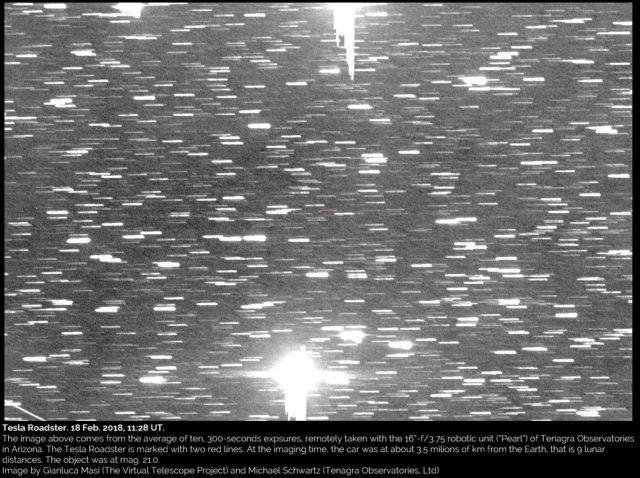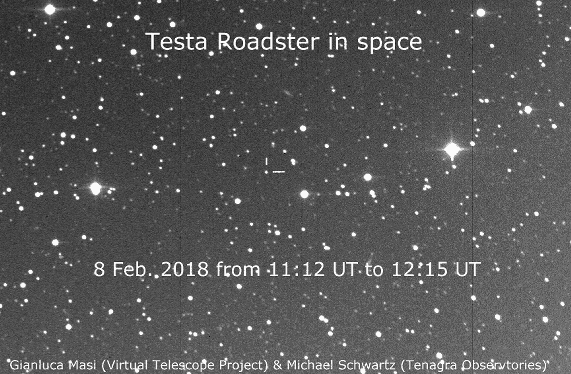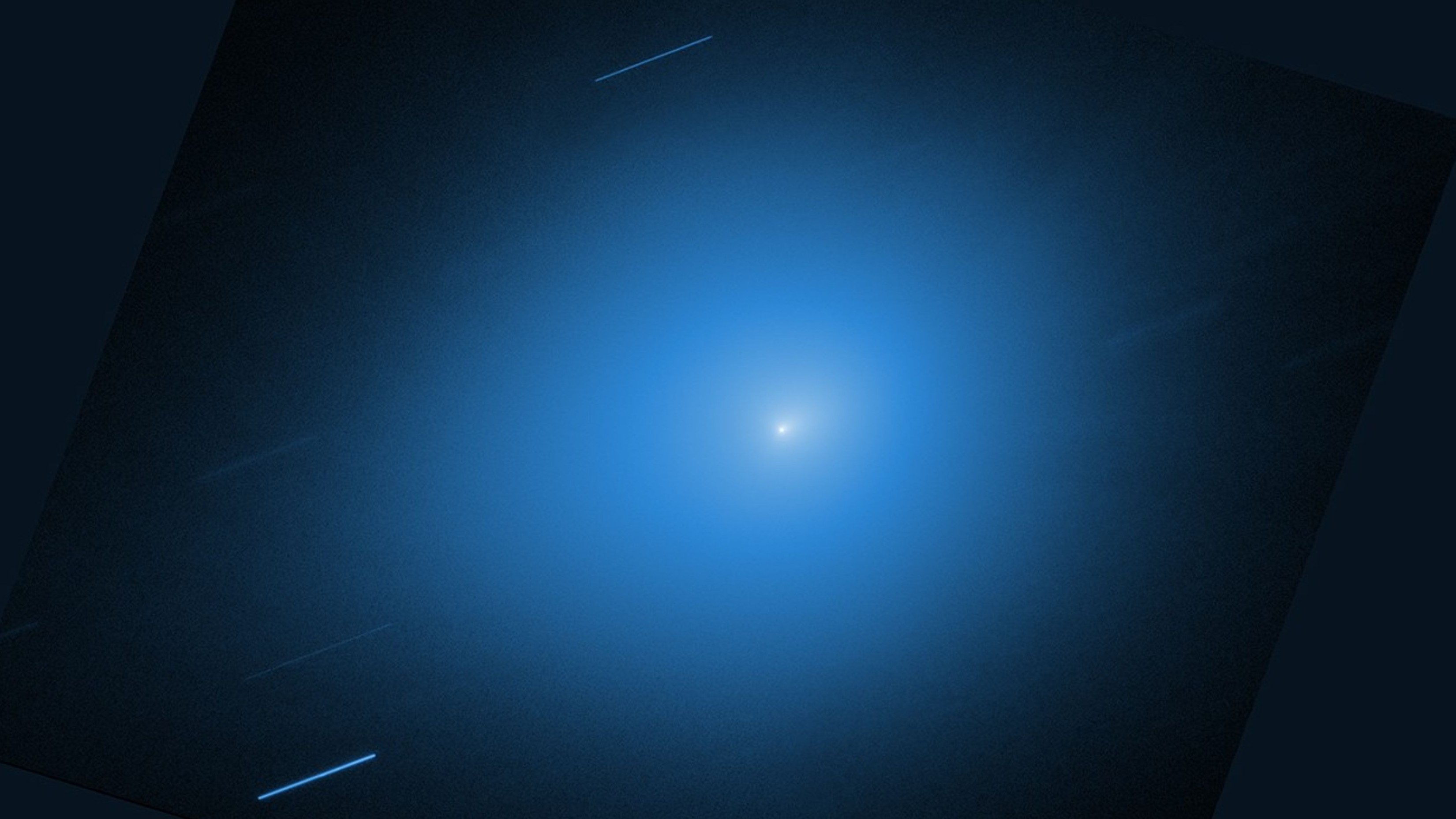How We Know This Tiny Pinprick of Light Is the Tesla Roadster

See that unbelievably tiny speck of light? That's the Tesla Roadster and Starman, its steadfast mannequin driver, that SpaceX launched into our solar system about two weeks ago on Feb. 6.
Starman and the Roadster were so remote — about 2.1 million miles (3.5 million kilometers) away from Earth — that it was challenging to get a good shot. But like any decent paparazzi, scientists tracked their target and captured an incredible image on Feb. 18.
"Its apparent brightness is extremely low, 40 million times fainter than the Polaris star," Gianluca Masi, an astrophysicist, founder and director of the Virtual Telescope Project in Italy, which helped capture the photo, told Live Science in an email. [Interstellar Space Travel: 7 Futuristic Spacecraft to Explore the Cosmos]
The image was assembled when Masi and his colleague — Michael Schwartz, the founder and president of Tenagra Observatories, in southern Arizona — took the average of 10 separate, 300-second exposures they got from a telescope at Tenagra Observatories, Masi wrote online.
The team members pinpointed the Roadster by relying on data from their own observations, as well as from NASA's Jet Propulsion Laboratory and the Minor Planet Center, which tracks minor bodies in the solar system, Masi said. Once they knew where to look for the car, they took a handful of images and averaged them to get a good signal-to-noise ratio.
"These many images can also be used to see if the object is moving as expected across the stars, which is another great way to confirm the detection," Masi said. "In short, many images with the car in the expected position, showing it in motion across the stars as expected confirms it is a genuine detection."
In fact, tracking the Roadster has become a hobby for Masi and Schwartz. They captured other images of the space-flying car on Feb. 8, just two days after SpaceX's Falcon Heavy rocket lifted it out of Earth's atmosphere. At the time of those photos, the Roadster was about 292,000 miles (470,000 km) away from Earth, Masi said.
Get the world’s most fascinating discoveries delivered straight to your inbox.
It's remarkable how the dot of light captured on Feb. 8 looks much larger than the speck taken on Feb. 18. Soon, it will be so far away that researchers will need a 3.2-foot (1 meter) or larger telescope to see it, Masi said.
"I must say, I was really excited to capture it, [even though] it is so faint now," Masi said. "We have been observing it every clear night, and this one was likely one of our final opportunities to see it."
Original article on Live Science.

Laura is the managing editor at Live Science. She also runs the archaeology section and the Life's Little Mysteries series. Her work has appeared in The New York Times, Scholastic, Popular Science and Spectrum, a site on autism research. She has won multiple awards from the Society of Professional Journalists and the Washington Newspaper Publishers Association for her reporting at a weekly newspaper near Seattle. Laura holds a bachelor's degree in English literature and psychology from Washington University in St. Louis and a master's degree in science writing from NYU.



